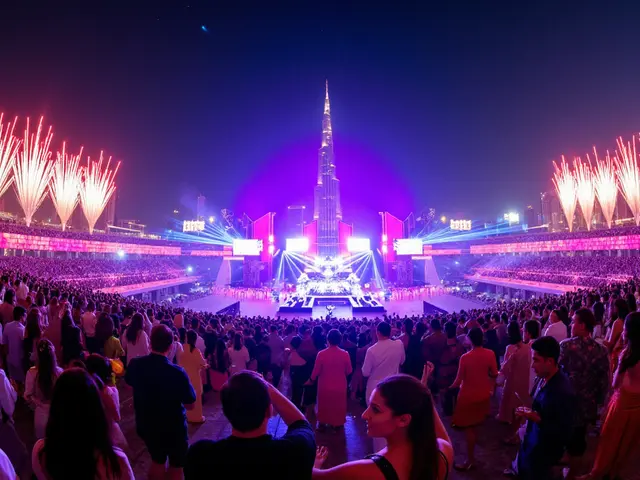
You want the night to go long, the energy to stay high, and your feet to make it to sunrise. That’s the promise-and the trap. Most people flame out by 2 a.m. because they overdo it early, under-fuel, or forget simple safety. This guide gives you a practical, no-ego playbook to keep your stamina, protect your hearing, and still have a blast. You’ll learn a pre-game routine that actually works, a pacing plan you can follow in the moment, and a recovery protocol so the next day doesn’t feel like a write-off.
Key Points and Direct Answer
TL;DR
- Pre-game right: sleep debt low, carbs + salt, comfy shoes, earplugs, cashless pay.
- Pace the night: start 70%, peak 1-3 a.m., reset at 3 a.m. with water, sodium, light carbs.
- Hydrate smart: 250-300 ml water per hour on the dance floor; alternate every alcoholic drink with water.
- Protect hearing: use high-fidelity earplugs; safe exposure around 85 dB for 8 hours (NIOSH), and every +3 dB halves safe time.
- Recover: protein + carbs before bed, 90-minute morning nap, electrolytes, gentle walk and stretch.
Direct answer: To dance all night without crashing, build a simple plan-rest well, fuel with carbs and electrolytes, wear supportive shoes and earplugs, start slow, drink water steadily, use light caffeine before midnight only, take short breaks, and close the night with a recovery snack and morning reset. That’s the combo that keeps your energy up and keeps you safe.
- Quick start checklist
- Day-of: drink 2-3 liters of water spread out; eat a balanced dinner with carbs + protein + salt.
- Pack: earplugs, lip balm, small sanitizer, plasters for blisters, portable charger, ID, tap-to-pay.
- Wear: breathable top, moisture-wicking socks, broken-in sneakers with arch support.
- Meet-up: set a regroup point; share location.
- Energy plan: 1-3 mg/kg caffeine no later than 11 p.m.; avoid new supplements tonight.

The Ultimate Night-Long Party Guide
What “Dance Through the Night” actually means: staying on your feet and in the vibe from around 10 p.m. to sunrise without big dips, injuries, or regrets. It’s not about max volume or max drinks. It’s managing energy, hydration, and mood so you can keep moving and still feel human tomorrow.
Why pacing beats hype: Most crashes happen because people sprint the first hour-two drinks too fast, no water, zero breaks. Your legs and nervous system need rhythm. Think marathon, not 100-meter dash.
Core benefits of doing this right:
- More time on the floor, less time in lines or outside cooling off.
- Better memories because you’re present, not fried.
- Fewer aches: ankles, knees, lower back, and ears protected.
- Faster recovery the next day-no fog, no regret, just good stories.
Before you go: the 90-minute prep
- Sleep buffer: If you can, add a 90-minute nap in the afternoon. Sleep runs in 90-minute cycles (Sleep Foundation), and finishing a full cycle reduces grogginess when you start late.
- Fuel: Eat 2-3 hours pre-party. Aim for slow carbs (rice, pasta, potatoes), lean protein (chicken, tofu), and a bit of salt (sauce, olives) to hold water.
- Hydration: Sip 500-700 ml water in the two hours before you leave. Avoid chugging right before entry to dodge bathroom lines.
- Footwear: Cushioned, grippy sneakers. If you’re tempted by new shoes, don’t. Break-in takes miles, not minutes.
- Hearing: High-fidelity earplugs keep music crisp while cutting 10-20 dB. Long-term hearing risk is real; WHO and NIOSH warn that sustained levels above 85-90 dB raise damage risk quickly.
- Tech: Charge your phone, enable low power mode at the door, and bring a slim power bank. Tickets are usually QR and venues are cashless in 2025-tap-to-pay is your friend.
Finding the right party (so the music keeps you going):
- Look for lineups with steady BPM (house, techno, amapiano) for endurance. If you prefer bass or pop, that’s fine-just expect more peaks and dips.
- Check set times: headliners around 1-3 a.m. plan your energy for that window.
- Venue: Good ventilation, water stations, and decent floor space beat the fanciest light show when you’re dancing four hours straight.
Your in-the-moment pacing plan (hour-by-hour):
- 10-11 p.m. - Warm-up: One drink max (or none), water in hand, easy moves. Find your spot, map exits and water bar, agree on regroup point.
- 11-12 - Settle in: Alternate 20-30 minutes dancing with 5-minute breathers. Sip 150 ml water per break. Light snack if needed (banana, granola bar).
- 12-1 - Build: If you use caffeine, this is your last small dose window. Keep it light (espresso or 100 mg). Avoid energy drinks after midnight if you’re sensitive.
- 1-3 - Peak: Ride the sets. Two short breaks. One water, one electrolyte. Alcohol? Cap at one drink per hour max, and only if you’re eating and hydrating.
- 3-4 - Reset: This is where many crash. Step outside for cool air, slow stretch for calves/hips/low back (30 seconds each), eat something salty + carb (pretzels, fries).
- 4-5 - Second wind: Keep moves lower impact-more groove, less jumping. Keep water steady. Check in with your group.
- 5-6+ - Glide: If sunrise vibes hit, enjoy them. Plan your exit before your body forces it. You want to leave feeling strong.
Hydration, electrolytes, and alcohol-the no-drama rules:
- Baseline: 250-300 ml water per hour while dancing (American College of Sports Medicine hydration guidance aligns with this for moderate activity).
- Electrolytes: Use a low-sugar mix or a pinch of salt with citrus. Sodium helps retain water when you sweat.
- Alcohol: 1:1 rule-match every alcoholic drink with equal water. If you lose track, take a 30-minute reset with only water/electrolyte.
- Caffeine: 1-3 mg/kg earlier in the night is plenty. After midnight, go easy to protect your sleep later.
Foot care and body mechanics:
- Move variety: Alternate high-bounce with shuffles, steps, and upper-body groove to spare your calves.
- Micro-stretch: Every hour, 60 seconds total-calf, hip flexor, low back. It pays off at 4 a.m.
- Blister prevention: Moisture-wicking socks and a dab of petroleum jelly on hotspots before you leave.
Hearing safety without killing the vibe:
- High-fidelity earplugs reduce volume evenly. You’ll hear vocals and hi-hats clearer and feel less drained.
- Rule of thumb: If you need to shout at arm’s length, it’s 90-95 dB+. Limit unprotected time. NIOSH’s 3 dB exchange rule means every +3 dB halves safe exposure.
2025 nightlife realities to plan around:
- Cashless and QR guest lists are standard-screenshots of tickets and IDs help when reception dies.
- Water often has a price; many venues sell electrolyte cans or NA cocktails now. Try them-L-theanine blends take the edge off caffeine jitters.
- Security is stricter on overcrowding; expect re-entry limits. Don’t leave unless you’re okay not getting back in.
Budget and timing:
- Tickets scale with hour and demand. Buying earlier saves cash and avoids surge pricing near midnight.
- Expect: base ticket + service fee, cloakroom, water/NA drinks, ride home. Keep a buffer for surge rides after 3 a.m.
Group game plan:
- One buddy is designated “logistics lead” (tickets, regroup point, charger).
- Share live location. If someone ghosts, you have a plan: check point, 10-minute wait, then text and carry on.
What to expect during a long session:
- Energy waves every 60-90 minutes; embrace them. Don’t chase constant highs.
- Heat builds fast in crowds; step to edges for airflow.
- Hunger sneaks in late; small salty carbs help more than sugar bombs.
Post-party recovery protocol (so the next day isn’t wrecked):
- Before bed: 300-500 ml water + electrolytes; small protein + carb snack (yogurt + granola, egg + toast).
- Sleep: Dark, cool room. If you can’t sleep long, aim for a 90-minute nap late morning to complete a sleep cycle.
- Morning: Gentle walk 15-20 minutes to reset your circadian rhythm; sunlight helps.
- Food: Balanced meal by midday; avoid heavy grease first thing.
- Body: Light stretch or mobility for hips/ankles; magnesium glycinate at night if it suits you.

Comparisons, Checklists, and FAQ
Club vs. festival vs. house party-what’s easiest to sustain?
| Setting | Energy Management | Hydration Access | Hearing Risk | Cost Control | Best For | Watch-outs |
|---|---|---|---|---|---|---|
| Club (indoor) | Stable; AC helps | Paid bottled; occasional fountains | High (close speakers) | Medium; surge drinks | Consistent vibe, late peak | Lines, re-entry rules |
| Festival (outdoor) | Variable; stages vary BPM | Stations; bring empty bottle if allowed | High; long exposure | Low to high; depends on food/drink | Exploring multiple sounds | Weather, dust, long walks |
| House party/loft | Depends on host/DJ | Kitchen access; easy refills | Medium; usually lower SPL | High control; BYO | Social flow, flexible breaks | Ventilation, uneven floors |
Pocket checklists
- Gear: earplugs, phone + power bank, ID, payment, plasters, sanitizer, lip balm, small snack.
- Wear: breathable layers, moisture-wick socks, cushioned sneakers, secure pockets or crossbody.
- Fuel: dinner with carbs + protein + salt; water in sips; optional small caffeine pre-midnight.
- Safety: regroup point, share location, know exits, trust your gut.
Heuristics that make decisions easy:
- If a line looks wild, check the bar or side room-less crowd, more air, faster refill.
- Two-song rule: If a spot feels off, move after two tracks. No need to wait it out.
- Breath check: If you can’t sing a line, you’re going too hard. Drop intensity for one track.
- Water rule: new drink, new water. Alcohol never without water.
Pitfalls to avoid:
- New shoes. They’ll win the photo and lose the night.
- Energy drink roulette at 2 a.m. Save caffeine for earlier; late caffeine wrecks sleep.
- Skipping food “to stay light.” You’ll fade faster and feel worse later.
- Standing near subs for hours. Bass fatigue is real; rotate your spot.
FAQ
- How much water is too much?
Sip steadily. 250-300 ml per hour of active dancing is a safe target. Over-hydration risk comes from chugging liters fast without electrolytes. Add a pinch of salt or use proper mixes. - Are earplugs really necessary?
Yes. WHO and NIOSH note that long exposure above ~85-90 dB raises hearing damage risk. Hi-fi plugs keep sound quality and reduce fatigue. - Best shoes for all-night dancing?
Cushion + arch support + grip. Think broken-in athletic sneakers or dance sneakers. Avoid flat, unsupportive soles and heels. - What if I’m sober?
You’re set. NA cocktails and electrolyte drinks are everywhere in 2025. Your pacing and hydration plan stays the same, minus alcohol management. - How do I stop the 3 a.m. crash?
Plan a reset: cool air, water + electrolytes, salty carb snack, 3-minute stretch, lighter dance moves for one or two tracks. - Is stretching on the dance floor weird?
Do quick, subtle moves-ankle rolls, calf stretch by a wall, hip hinge. Nobody minds. You’ll feel fresh after. - What if I lose my group?
Use the agreed regroup point. Give it 10 minutes. If missed, message your plan and keep moving. Don’t burn an hour searching.
Next steps and troubleshooting
- If you faded early last time: Eat more carbs pre-party, move your caffeine earlier, and take planned breaks every hour.
- If you overheated: Choose a venue with better airflow, wear lighter layers, and dance near edges where air circulates.
- If your ears rang the next day: Upgrade to high-fidelity earplugs and stand away from the main stacks.
- If you spent too much: Buy tickets earlier, set a drinks cap, and alternate with water. NA options often cost less.
- If recovery hurts: Walk 15-20 minutes in daylight, hydrate with electrolytes, and hit a 90-minute nap. Gentle mobility beats lying in bed all day.
Bottom line: a little structure makes the night feel effortless. Prep, pace, protect your ears, and listen to your body. You’ll get the sunrise moment you came for-and you’ll actually want to go out again next weekend.





